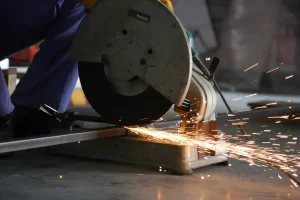Canal dredging is a vital process for maintaining waterways, improving navigation, and managing sediment build-up. However, it involves complex operations that pose several safety risks. To ensure the safety of personnel, equipment, and the environment during canal dredging, it is essential to implement stringent safety measures and practices. Below are key strategies to maintain safety throughout the dredging process.
Conduct inclusive risk assessment:
Before beginning any dredging project, conduct an inclusive risk assessment to identify hazards associated with the operation. This includes assessing risks related to equipment, environmental conditions, and human factors. Evaluate factors such as underwater obstructions, unstable banks, and weather conditions that could impact safety. Developing a detailed risk assessment helps in creating a tailored safety plan to mitigate identified risks.
Implement proper training and certification:
Ensure that all personnel involved in dredging operations are properly trained and certified. Training should cover the safe operation of dredging equipment, emergency procedures, and first aid. Certifications from recognized bodies ensure that workers are knowledgeable about industry standards and best practices. Regular refresher courses and drills can help keep skills and knowledge up-to-date, improving overall safety on site.
Use personal protective equipment (PPE):
Personal protective equipment (PPE) is important for safeguarding workers against hazards. Essential PPE for dredging operations includes helmets, safety goggles, gloves, life vests, and high-visibility clothing. Depending on the specific risks of the project, additional equipment such as hearing protection, respiratory masks, or waterproof gear may be necessary. Ensure that PPE is well-maintained and properly worn by all personnel.
Maintain equipment regularly:
Regular maintenance of dredging equipment is key for safe operations. Inspect equipment daily before use to check for any signs of wear, damage, or malfunction. Key components such as dredge pumps, hydraulic systems, and cutting tools should be thoroughly examined and serviced according to the manufacturer’s recommendations. Proper maintenance reduces the risk of equipment failure, which could lead to accidents or injuries.
Establish safe operating procedures:
Develop and enforce clear operating procedures for all aspects of the dredging operation. This includes protocols for handling equipment, managing sediment, and interacting with other vessels or personnel on site. Establish communication procedures for reporting safety concerns and emergencies. Ensure that all team members are familiar with these procedures and adhere to them consistently.










More Stories
4 Must-Have Accessories For Your Outdoor Furniture
How To Choose The Right Locations For OOH Ads
What Types Of Businesses Can Operate In DWTC Freezone?